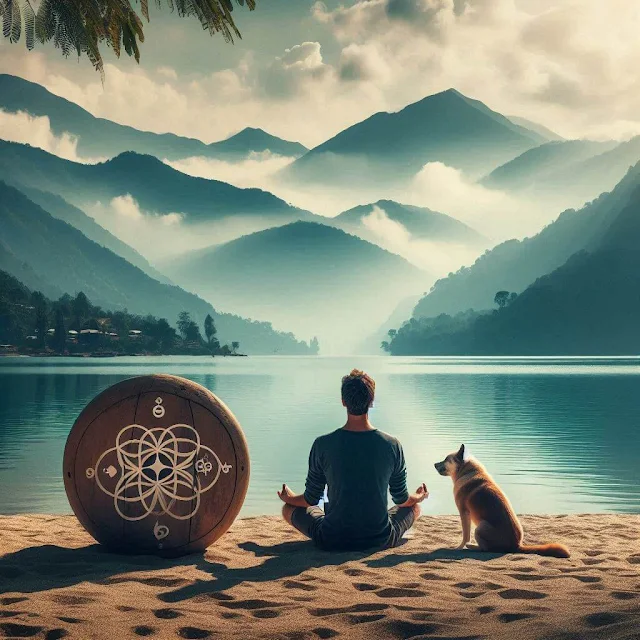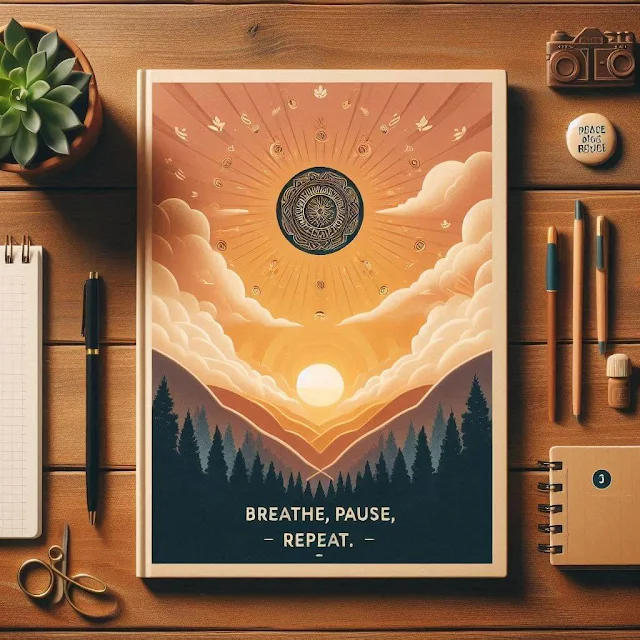- Get link
- X
- Other Apps
- Get link
- X
- Other Apps
1. What Is Everyday Meditation?
When I say "meditation,"
what comes to mind?
Crossed legs?
Burning incense?
Maybe an app voice whispering,
“Breathe in... breathe out”?
But real meditation,
especially everyday meditation,
isn’t about rituals.
It’s about returning to yourself—
again and again, simply and gently.
At its core, meditation is
the act of bringing awareness
to your breath,
your body,
your moment.
And everyday meditation?
That’s doing exactly that—
while walking, cooking, working,
or waiting in line.
According to a 2024 study
from the University of Oxford,
short, daily mindfulness practices
reduced perceived stress by 43%
in just two weeks.
2. Why You Don’t Need an Hour or a Mat
The 2-Minute Window That Changes Everything
Here’s the truth
You don’t need an hour a day
to meditate.
You need a moment of presence.
Two minutes at your desk.
Three deep breaths before lunch.
A pause before you answer an email.
These tiny meditations
rewire your brain
in powerful ways.
Neuroscientist Judson Brewer
notes that micro-mindfulness moments
can lower amygdala activity,
helping you respond calmly
instead of reacting impulsively.
Meditation Doesn’t Always Look “Spiritual”
You don’t need to chant
or clear your mind completely.
It’s totally normal
for your mind to wander.
That’s what it does!
The practice is
noticing the wander...
and gently returning.
That’s it.
3. Simple Everyday Meditation Habits
Walking With Awareness
Next time you walk—
even to the kitchen—
try this
Feel the floor beneath your feet.
Notice how your body moves.
Pay attention to rhythm.
Each step can be a breath.
A return.
“Walking meditation reconnects
movement and presence,”
says Zen teacher Thich Nhat Hanh.
Breathing Before Speaking
Before you answer,
before you scroll,
before you say “yes”
when you meant “no”...
Take one deep breath.
Feel the inhale rise.
Feel the exhale fall.
Even a single breath
can shift your mindset
and save your energy.
Pause During Transitions
Every time you switch tasks—
closing one tab,
picking up your phone,
entering a room—
pause.
Three seconds.
Notice the shift.
Feel your body.
Transitions are perfect
moments to return to presence.
And they happen
dozens of times a day.
4. What Happens in the Body and Brain?
Brainwaves and Calm
Meditation increases
alpha and theta waves,
which are linked to
relaxation and creativity.
A 2023 NIH study
found that just 5 minutes
of focused breathing
reduced cortisol
and improved heart rate variability.
Basically,
your brain and body remember
what peace feels like—
and begin to crave it.
The Power of Neural Plasticity
Every time you meditate,
you reinforce the “pause-and-refocus” circuit
in your brain.
Over time,
this becomes a habit.
A baseline.
A new normal.
Harvard neuroscientist Sara Lazar
found that meditators
had thicker grey matter
in areas linked to emotional regulation
and attention.
Isn’t that wild?
5. Common Blocks and How to Move Through Them
“I Don’t Have Time”
Start with 30 seconds.
Set a 1-minute timer.
Do it in the shower.
Before you unlock your phone.
During your commute.
No time is no excuse.
You just need the will
to come back to breath.
“I’m Not Doing It Right”
There is no right.
There’s only trying, drifting, returning.
That’s the whole game.
Meditation isn’t about control.
It’s about compassionate awareness.
You’re not failing—
you’re practicing.
That’s enough.
6. Everyday Places to Meditate (That You Didn’t Expect)
-
In the bathroom stall
anctuary of silence. -
In the elevator
no eye contact needed. -
At the red light
inhale slowly, exhale fully. -
While folding laundry
rhythm becomes breath. -
During hold music
feel your feet on the ground. -
In bed before you open your eyes
presence before input.
These spaces are already in your life.
Use them.
7. How to Start Your Own Practice—Gently
Beginner’s Guide Checklist
-
Choose one anchor: breath, sound, or body.
-
Start with 2 minutes daily—use a timer.
-
Pick one time slot (e.g., after lunch).
-
Allow thoughts. Return kindly.
-
Track how it feels—not just the duration.
-
Don’t try to be perfect. Be present.
Consistency beats intensity.
Always.
A Sample Daily Flow
-
Morning: 3 deep breaths in bed
-
Afternoon: walk + mindful noticing
-
Evening: 2-minute seated pause
-
Night: gratitude + final breath before sleep
Tiny rituals.
Big impact.
8. Meditation Isn’t an Escape—It’s a Return
Let me say it clearly
Everyday meditation is not about escape.
It’s about coming home
to what’s already here.
It’s available
when you’re tired,
overwhelmed,
or running errands.
That quiet, steady part of you
doesn’t need incense or silence.
It just needs
a breath, a pause,
and your attention.
Start today.
You’re already on the path.
breathing practice
calming techniques
everyday routine
meditation
meditation for beginners
mental clarity
mindful living
mindfulness
self-awareness
stress relief
Location:
미국
- Get link
- X
- Other Apps



